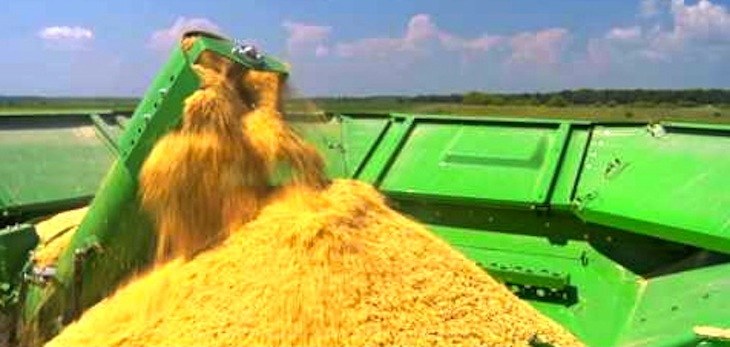Water supply, stink bugs among potential issues as Arkansas’ planting season progresses
by May 29, 2018 4:35 pm 472 views

Despite an unusually cold spring, and inconsistent weather, Arkansas row crop farmers have planted nearly all of their corn, soybean, and rice crops, according to the University of Arkansas System of Agriculture.
About 96% of the state’s rice crop is planted, and 85% of that has emerged, according to the United States Department of Agriculture’s National Agricultural Statistics Service, or NASS.
More than 81% of the state’s soybean crop has been planted, and corn is at 95%, the NASS reported. It has been a typically planting season following the late start, but there are still issues farmers may have to confront in the coming weeks and months, University of Arkansas at Monticello agriculture economist Dr. Robert Stark Jr. told Talk Business & Politics.
“I think we’re concerned a little bit about the reserve moisture in the ground,” he said. “I know a lot of farmers are working this week to get irrigation systems in place, just in case it turns dry and hot. Overall, I think we’ve got a good crop established.”
There have been no major outbreaks of disease or insect problems, Stark said. One bug, the red banded stink bug, is closely monitored, especially in soybean fields in the southern part of the state, he said. Many different types of insects attack foliage on plants causing yield reductions, but the stink bug is different, he said. It will attack the soybean seed in the ground, and can kill the plant if not stopped, he added.
“It’s a pest we have to stay on top of,” he said.
In Craighead County, hit and miss rain showers during the last several weeks have slowed the chemical application process for several crops, and especially rice, Craighead County Extension Agent Brannon Thiesse told Talk Business & Politics.
The ground needs to be dry for several days before the fertilizer can be applied to the rice plants, he said, but sporadic rains have hampered those efforts. Once the fertilizer is applied, the rice fields can be flooded to allow the crop to grow. There is no major flooding in the county, but a field or two might be underwater from the rains, he said.
“We need some drying time, no doubt about it,” he said.
In 2017 the state grew 3.5 million acres of soybeans, according to the USDA. Soybeans are the state’s most abundant crop, and the five leading soybean-producing counties are in Northeast Arkansas, according to the USDA. Mississippi County (292,453 acres) had the most followed by Phillips County (244,940 acres), Crittenden County (236,838 acres), Poinsett County (197,590 acres) and Arkansas County (179,388 acres).
Estimates for 2018 will be tabulated once the crops are completely planted.
Soybean prices have been depressed in recent years because of a surge in soybean market growth in South America, especially in Brazil and Argentina. Farmers in those countries are slashing rain forest acres to create soybean farms. Arkansas is the leading rice producing state in the country, and accounts for about half of the nation’s production. In 2017, Arkansas rice farmers planted about 1.1 million acres.
Dryer weather, overall, may cost farmers more money in terms of input costs, but there are benefits, Stark said. Diseases, especially in soybeans, flourish when the temperatures are moderate and there is moisture, he said. Dry heat makes it harder for diseases to operate in crops, he added.
“Hopefully, Mother Nature will cooperate with us,” he said.
